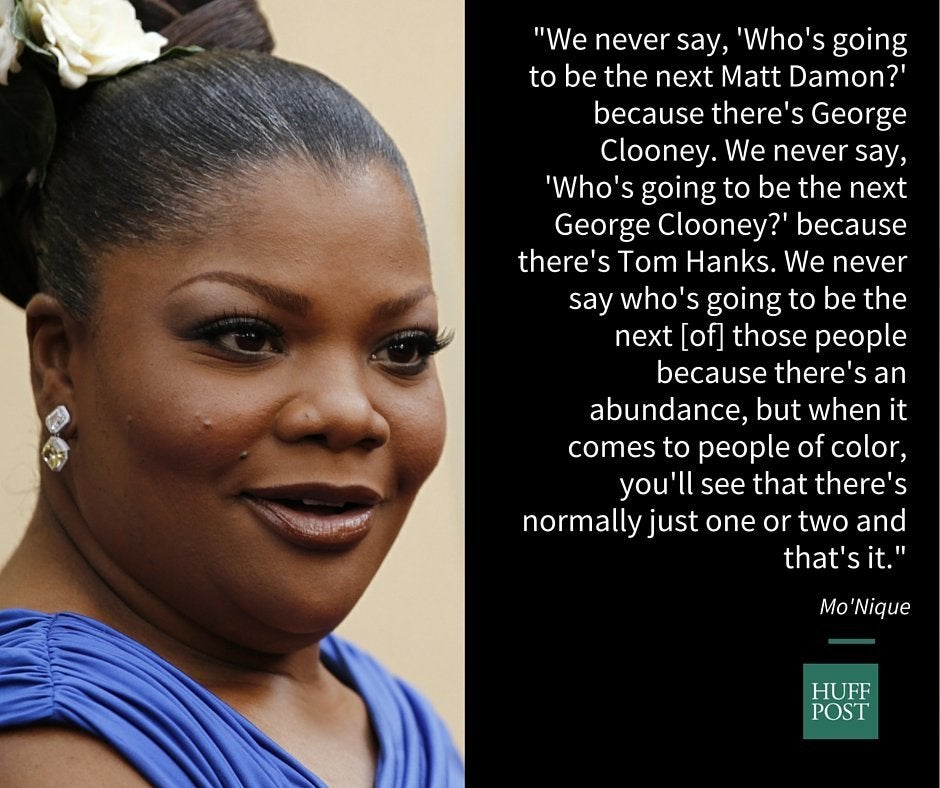“Big Little Lies” is one of the most brilliant TV shows to come out in years. It’s also one of the whitest.
The murder-mystery-drama, which had its stunning finale on Sunday, focuses on five wealthy, beautiful women with less than beautiful lives. Aside from a few Asian and black characters who are part of the Monterey community’s “greek chorus,” four out of five of the show’s main players ― Nicole Kidman, Laura Dern, Shailene Woodley and Reese Witherspoon ― are white women.
There’s only one black lead, Bonnie, played by Zoe Kravitz in a role that reveals her acting chops despite being so seemingly close to our conception of the real life Kravitz: earthy, edgy and carefree. Bonnie, with tattoos and waist-length braids, is the only black mom amongst a slew of predominantly older, white mothers, and it’s a point that, conspicuously, never really comes up.
“It’s not mentioned, ever,” Kravitz told a reporter for The Guardian in February. “Her race is just not a thing.”
Perhaps for Kravitz, the fact that her character’s race is never acknowledged is refreshing in an industry where she was once rejected for a role in Batman because the directors weren’t “going urban.” For others, it’s a tedious color-blind approach to diversity. As Refinery29 writer Sesali Bowen expressed it, glossing over Bonnie’s ethnicity merely added “diversity in visibility only,” presenting race “as a mere aesthetic difference between people, not one that affects how they interact with the rest of the world.”
It’s true that the show’s treatment of Bonnie was flawed. We see very little from her point of view, except for in the brilliant final act of the show. Here, on the night of the Elvis and Audrey fundraiser, the camera shifts to Bonnie’s perspective as she watches Celeste being manhandled by her husband ― realizing that something isn’t right.
I often watched the show wondering where the hell in Monterey Bonnie got her hair braided, or if she ever twisted her daughter’s hair at night. Who were her people? And yet, there’s an alternative reading of Bonnie’s apparent racial ambiguity in Monterey. It isn’t pretty. It’s frustrating. And it’s true to life in a way that potentially says more than if we’d gotten a scene that explicitly acknowledged her race.
Because this is how rich, white liberal racism works, right? It’s the racism that dare not speak its name. It’s the racism that deals with race by not dealing with it, by never saying “black” or “white,” by tip-toeing around it even as it manifests itself in petty microaggressions.
Bonnie’s blackness, her otherness in the eyes of her white counterparts is actually, throughout the series, weirdly at the center of who her character is. She is the exoticized “other,” the beautiful, young, hippie wife who inspires lust in the husbands of Monterey, and jealousy and resentment in the wives.
It’s a jealousy and resentment that hides, just beneath the surface, a racial tension that no one ― not even Bonnie herself, perhaps ― can name, let alone process. No, we never see Madeline complain to any of her friends about Bonnie being a black girl. A woman like Madeline, so dedicated to her ideals of being progressive and open-minded (her obsession with getting “Avenue Q” made for instance), wouldn’t even know how to begin to process how race might feed into her feelings about her husband’s new wife.
Bonnie’s seeming perfection, her exceeding patience and goodness, works on a different level as well. Throughout the series we get to see these seemingly “perfect” women fuck up repeatedly, we see them have meltdowns, act bitchy, be vulnerable and insecure. We see little of that in Bonnie, a beautiful enigma just there to “make peace.” Though toward the end of the series, we see her peaceful demeanor begin to crack, if only a little, during the well-intentioned peace-making dinner with Madeline and Ed which ends with Madeline literally projectile vomiting on her. In that moment, viewers understood that there must be more to Bonnie, just beneath the surface.
So much of Bonnie’s existence in Monterey is a demonstration of how black people, black women especially, have to exist in predominantly white spaces. The idea is to not rock the boat. The idea is to placate white fear by being palpable. Bonnie is edgy, but not threatening with her light skin, earthy vibes, and perpetual chillness. Maybe she’s had to be all those things.
Which makes that final moment, that push, when she exerts a kind of messy, frenzied sort of agency that we haven’t seen throughout the series, all the more powerful. This isn’t to absolve “Big Little Lies,” or any other shows with black characters that choose not to deal with race directly, from “Friends” to “Girls.” It’s quite possible that the show never mentions Bonnie’s race because the writers themselves were unable or unwilling to deal with race, and that’s unfortunate and frustrating. And it’s true: Diversity and inclusion are about more than just seeing a black face in a white crowd.
And yet there’s something to be said for the context in which black characters exist; the ways in which they navigate the world they exist in and how white characters they exist in that world with navigate them. Sometimes, the silence can be loud.

